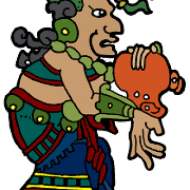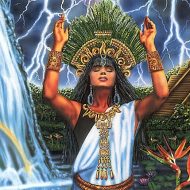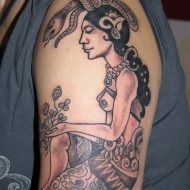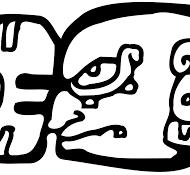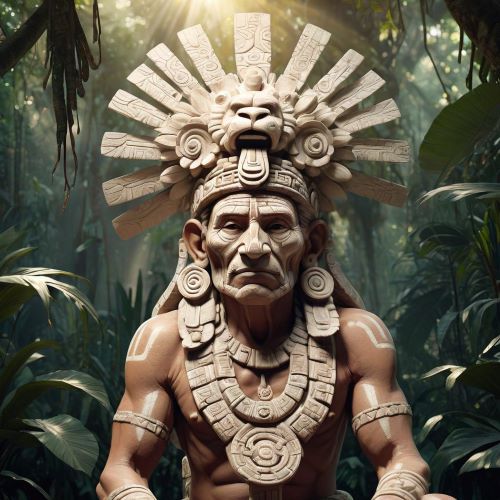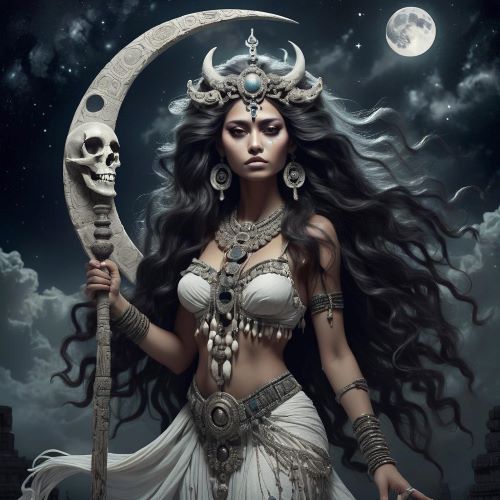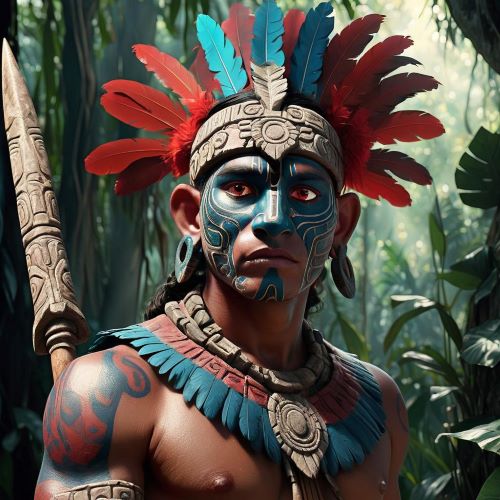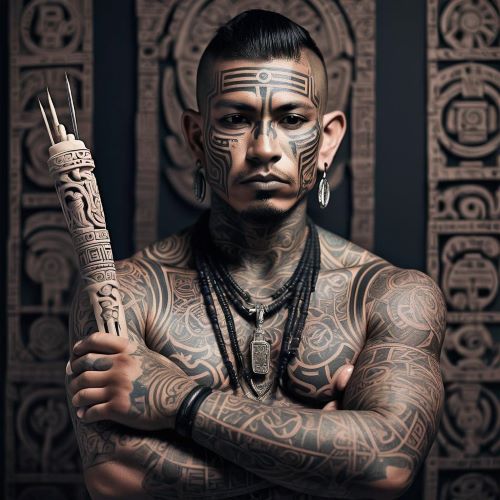Ix Chel : The Moon Goddess
Listen
At a glance
| Description | |
|---|---|
| Origin | Mayan Mythology |
| Classification | Gods |
| Family Members | Itzamna (Husband), Bacab (Son) |
| Region | Guatemala, Belize, Honduras |
| Associated With | Moon, Jaguar, Medicine, Midwifery, Water |
Ix Chel
Introduction
Ixchel or Ix Chel was a 16th-century name given to a female jaguar goddess of medicine and midwifery in the ancient Maya culture. She is related to another Aztec goddess called Toci Yoalticitl, who lives in a sweatbath. Ixchel, also spelled Ix Chel, is a deity associated with the Mayan moon Goddess O. Ixchel was depicted as an evil old woman who held unfavorable aspects, and she was patroness of womanly crafts. In a recent revision of the Schellhas-Zimmermann classification, Ixchel was regarded as a codical deity.
It is believed that Ix Chel was a part of the God Itzamna. She was regarded as the goddess of the moon, water, childbirth, and weaving in the Maya of the peninsular of Mexico. She is also the mother of all the Mayan deities and has rules about the cycles of life and death. As the keeper of souls, Ixchel constantly changes from being a young beauty into a wise old crone who shares her people’s wisdom.
Physical Traits
Ix Chel was capable of taking various forms. It’s possible that some of her aspects were actually depictions of other goddesses. There are also two major aspects of her that are generally agreed upon.
Ix Chel was often depicted as an older woman who was wearing a serpent crown and wearing traditional Mayan clothing. In this version, she may have also worn a skirt that had crossed the bones of her dress. She was also said to have had claws on her feet and hands. Ix Chel was often depicted with a frightening mouth and a large earthen vessel.
Sometimes, Ix Chel was portrayed as a young woman. She was attractive and wore a headdress. Her beak was also present on her upper lip. This younger version of Ix Chel was often presented in a more friendly manner than her elder one.
Family
The most significant event in her family’s life was her husband. In some Mayan tales, she was married to a man known as Votan, while in others, she was married to Itzamna. In the mythology of Shex Chel and Itzamna, she has 13 sons. One of these is a deity known as Bacab, who holds the sky in Mayan mythology. It’s also possible that the four Bacabs were only sons of Shex Chel and Itzamna. Ix Chel had a connection with Hun Hunahpu, who was a Maize god. Although it’s not clear if he was one of her 13 sons, she reportedly helped him in his efforts to be reborn.
Other Names
Ix Chel has been referred to as The Queen, Lady Rainbow, Eagle Woman, Our Mother, the White Lady, Goddess of Becoming, Mother Earth, the Womb, the Cave of Life, Keeper of the Bones and other localised names.
Powers and Abilities
Ix Chel, the magnificent goddess of Mayan mythology, wielded powerful divine abilities that resonated across various aspects of life. Revered as the matron of childbirth, guardian of midwifery, and mother of crops, her influence spanned the realms of rain, fertility, and agriculture. As the goddess of fertility, Ix Chel was believed to govern the reproductive cycles of humans, animals, and plants.
Her symbolism was richly embodied by a medicine bag, a spindle, and a weaving shuttle. The medicine bag symbolized her healing prowess, while the spindle and weaving shuttle underscored her connection to weaving and childbirth. Beyond her lunar associations, Ix Chel’s divine domain encompassed a diverse array of powers and abilities. She presided over childbirth and women’s reproductive health, bestowing blessings for safe pregnancies and deliveries. Additionally, her profound knowledge of herbal medicine empowered her to heal ailments and promote well-being, embodying the interconnectedness of life as she deftly spun the threads of fate and destiny.
Ix Chel’s influence extended further as the moon goddess, where she governed the tides, menstrual cycles, and fertility, acting as a protector of women, particularly during childbirth. Midwives invoked her to ensure safe deliveries, drawing upon her connection to water in matters of healing and medicine. According to Mayan beliefs, Ix Chel possessed unparalleled knowledge of medicinal herbs and the ability to cure illnesses, reflecting her essential role in sustaining life.
Moreover, Ix Chel was associated with weaving, a pivotal skill for Mayan women. Legend has it that she oversaw the creation of textiles and was invoked for success in this fundamental craft. Some narratives depict a dual nature of Ix Chel, with accounts suggesting her capacity to bring storms and misfortune—a reminder of the delicate balance and potential dangers associated with the moon’s influence, mirroring the inherent complexities of nature itself.
Modern Day Influence
Ix Chel’s enduring legacy extends into contemporary culture, especially within indigenous communities across Mesoamerica and beyond. In regions like modern Mexico and Central America, she is esteemed as a symbol of women’s health and empowerment, with her iconography often woven into traditional crafts, textiles, and jewelry. Additionally, Ix Chel’s symbolism has garnered wider acknowledgment within spiritual communities, where she is revered for her nurturing essence and deep connection to nature. As global awareness of indigenous traditions expands, Ix Chel serves as a poignant reminder of the timeless wisdom and resilience inherent in ancient cultures.
In areas densely populated by Maya descendants, Ix Chel continues to be venerated as a guardian of women and childbirth. Her likeness frequently appears in traditional Maya artworks and textiles, reaffirming her profound significance within these communities. Scholars diligently explore her multifaceted persona, recognizing her pivotal role in elucidating Maya beliefs about the universe and human existence.
Beyond Maya communities, Ix Chel captivates the imagination of artists and writers drawn to her enigmatic and formidable character. Her presence manifests in contemporary art, literature, and even interactive media such as video games. This enduring fascination underscores the universal themes embodied by Ix Chel—fertility, femininity, the cyclical rhythms of life, and the delicate equilibrium between creation and dissolution.
Ix Chel’s influence remains palpable in modern childbirth practices, where she is invoked as a symbol of maternal care and strength, particularly during and after childbirth. The tradition of older women acting as midwives, echoing Ix Chel’s nurturing role, persists today, especially in instances of home births within the region. Her portrayal as a potent and benevolent deity continues to inspire women and artists globally. Indeed, her imagery has permeated contemporary popular culture, appearing in diverse settings ranging from resorts and language schools to feminist sanctuaries, embodying the enduring allure and relevance of this ancient Mayan goddess.
Related Images
Frequently Asked Questions
Who is Ixchel in Maya mythology?
Ix Chel, a powerful Mayan goddess, rules the moon, fertility, and medicine. She’s depicted as both a young moon maiden and a wise midwife, reflecting life’s cycles. Her influence continues to inspire artists and Mayan communities today.
Who is the wife of Ix Chel?
In Mayan mythology, Ix Chel doesn’t have a husband in the traditional sense. Some stories depict her as the wife of Itzamná, the creator god, but there are also contradictory accounts. It’s possible she was seen as a manifestation of Itzamná’s feminine aspect.
What does Ix Chel symbolize?
Ixchel embodies the cycles of life, from nurturing fertility and healing to the powerful moon’s influence. She reflects the strength of the feminine and the delicate balance within nature. Her image connects the Mayan world to the cosmos.
Where does Ix Chel live?
Ix Chel wasn’t confined to one place. The Maya saw her in the moon, a celestial home. They also believed she resided in sacred cenotes and held a special connection to the island of Cozumel.
Is Ix Chel good or bad?
Ix Chel wasn’t simply good or bad. She embodied the balance of nature. She brought life through fertility and healing, but storms and the moon’s darkness hinted at a destructive side.

